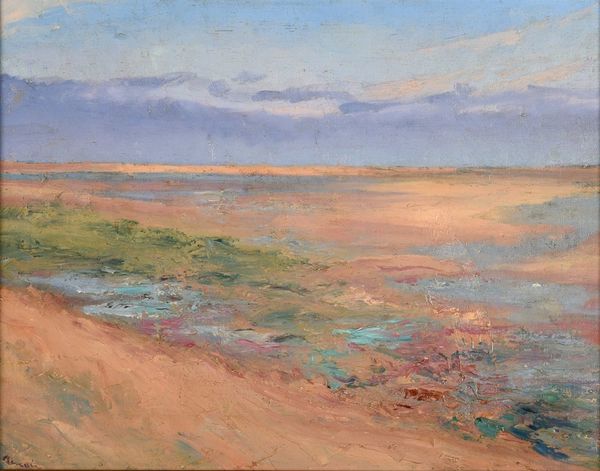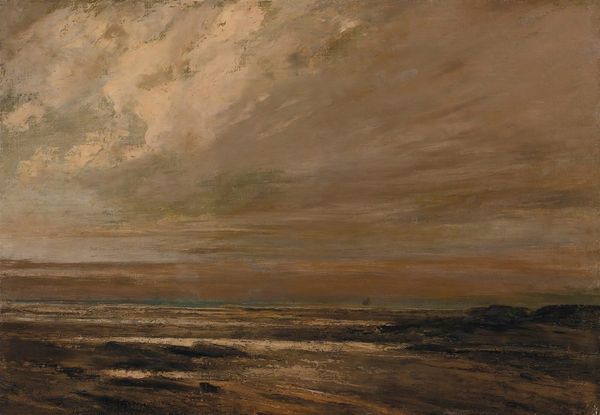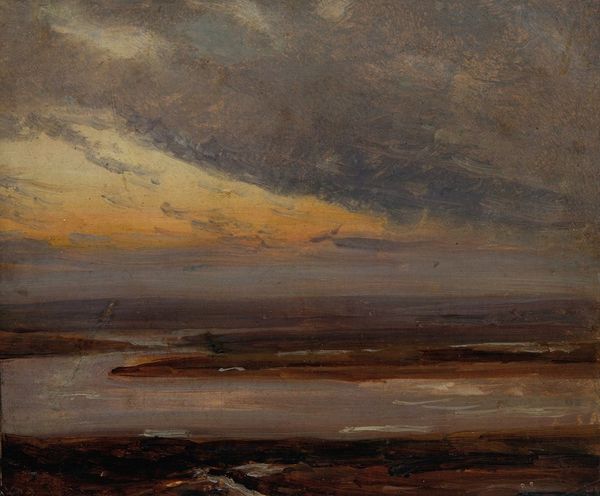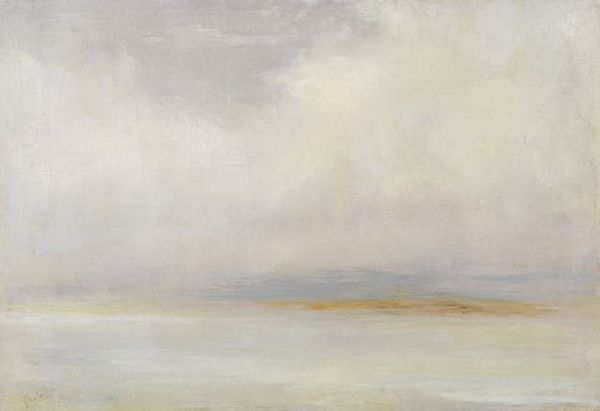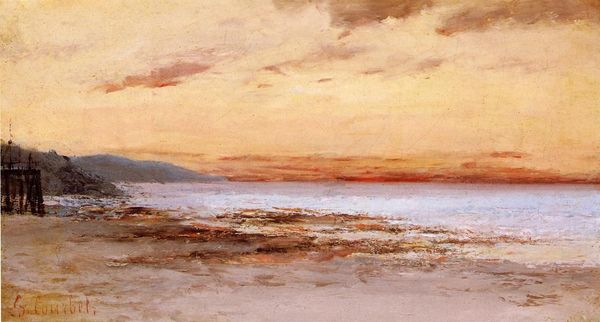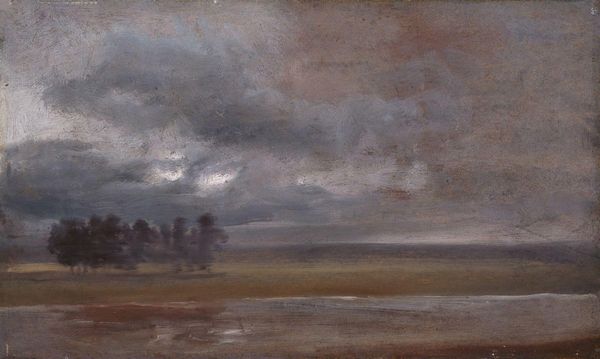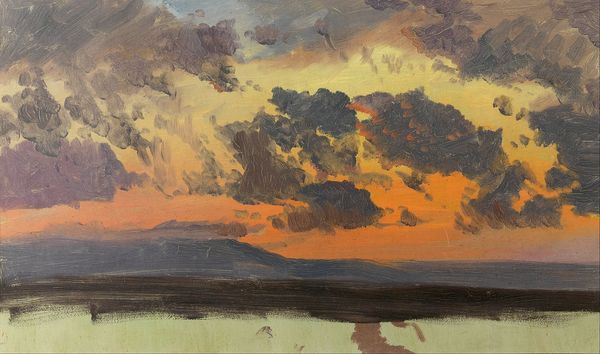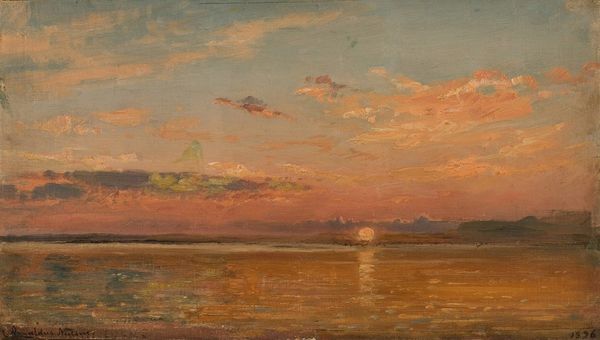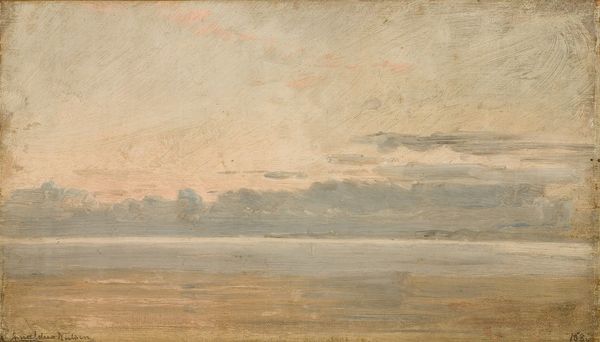
Copyright: Public domain
Curator: Looking at this piece, the brushstrokes create a rather turbulent sky; what are your first impressions? Editor: Brooding. It evokes a feeling of solitude, even melancholy. The limited palette of muted blues, browns, and oranges creates a somber atmosphere. Curator: This is Gustave Courbet's "Seascape," painted in 1866. Courbet was a central figure in the Realist movement, but here he approaches the Romantic tradition, even skirting Impressionism with that attention to the atmosphere. Given the period, his seascapes were unusual as landscape alone; people and events typically enlivened such works. Editor: Interesting, as the symbolic weight feels concentrated in the elemental power of the scene itself. The water, the earth, the sky – they become stand-ins for human emotion, amplified by their isolation. The horizon line is low, dominated by that expansive sky. Does that proportion carry symbolic significance? Curator: Absolutely. Consider Courbet’s position in the mid-19th century: the burgeoning industrial revolution, the rise of scientific positivism... He turns away from historical or mythological narratives and toward the observable world. The seascape becomes a canvas for exploring man's relationship with nature in a rapidly changing world. We might read it through the lens of environmental anxiety. Editor: The almost brutal honesty of the brushwork reinforces that feeling. The artist is present in every stroke, actively interpreting the scene. In terms of visual language, the lack of defined shapes lends an almost dreamlike quality. Those roiling clouds remind me of classic vanitas paintings—evanescence of existence reflected in landscape. Curator: It's a compelling point, that inherent tension speaks volumes, particularly considering the historical context. We see the social upheaval that shaped Courbet’s vision; the very act of painting this directly challenges established norms. What looks like a simple seascape embodies rebellion. Editor: It seems a landscape of introspection as much as observation. It is through that deeply personal, slightly anxious interpretation that its cultural impact grows richer and the symbolic charge remains fresh. Curator: Precisely. It remains incredibly relevant today, as discussions of climate change grow, so the canvas becomes an invitation for modern reflections.
Comments
No comments
Be the first to comment and join the conversation on the ultimate creative platform.
